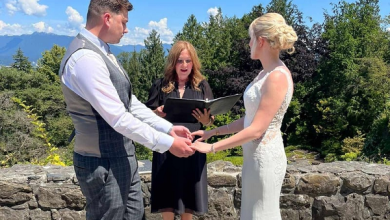USA Marriage Visa Application Guide for Immigrants – Live in USA
Immigrating to the United States through marriage is one of the most common pathways for foreign nationals to join their U.S. citizen or lawful permanent resident spouses. The process, while rewarding, can be intricate and requires a clear understanding of the steps, requirements, and legal considerations involved.
This guide aims to demystify the process and provide a comprehensive overview to help applicants successfully navigate the U.S. marriage visa process.
Types of Marriage Visas
The type of marriage visa you apply for depends on your current location (inside or outside the U.S.) and your spouse’s immigration status. The two primary categories are:
- K-1 Fiancé(e) Visa: For foreign nationals engaged to a U.S. citizen and planning to marry in the U.S.
- CR-1 or IR-1 Spouse Visa: For foreign nationals already married to a U.S. citizen or lawful permanent resident.
- CR-1: Conditional residency for marriages under two years at the time of application.
- IR-1: Immediate relative visa for marriages over two years.
Step-by-Step Guide to Obtaining a Marriage Visa
1. Eligibility Requirements
- For the U.S. Citizen/Resident Spouse:
- Must be a U.S. citizen or lawful permanent resident.
- Must prove financial ability to sponsor the immigrant spouse (minimum 125% of federal poverty guidelines).
- For the Foreign National:
- Must be legally eligible for marriage.
- Must not have immigration or criminal violations that bar entry to the U.S.
2. Filing the Petition
- The U.S. spouse begins the process by filing Form I-130 (Petition for Alien Relative) with U.S. Citizenship and Immigration Services (USCIS).
- Required Documents:
- Proof of U.S. citizenship or lawful permanent residence (e.g., passport, green card).
- Marriage certificate.
- Proof of a bona fide marriage (photos, joint accounts, correspondence, etc.).
- Processing Time: I-130 approval typically takes 6-12 months, depending on USCIS workload.
- Required Documents:
3. National Visa Center (NVC) Processing
- After USCIS approves the I-130 petition, the case is forwarded to the NVC for additional processing.
- Steps:
- Pay processing fees for the immigrant visa application and Affidavit of Support.
- Submit Form DS-260 (Immigrant Visa Application) online.
- Provide supporting documents such as civil documents (birth certificates, police certificates) and the Affidavit of Support (Form I-864).
- Tips:
- Ensure all documents are accurate and translated into English if necessary.
- Ensure timely responses to any NVC requests to prevent processing delays.
4. Medical Examination
- The immigrant spouse must undergo a medical examination by a USCIS-approved physician.
- Requirements:
- Vaccination records.
- Tests for communicable diseases.
- The medical report is sealed and submitted directly to the U.S. embassy or consulate.
5. Consular Interview
- The final step in the application process is the visa interview at a U.S. embassy or consulate in the immigrant spouse’s home country.
- Preparation:
- Bring all original documents, the medical report, and proof of a genuine relationship.
- Get ready to address inquiries about your relationship, marriage, and future aspirations.
- Common Questions:
- How did you meet your spouse?
- Where and when was your wedding?
- What are your spouse’s hobbies, work, and family background?
- Outcome: If approved, the visa is issued within a few weeks.
READ – Obtaining an Immigrant Visa for a Spouse of a U.S. Citizen
Adjusting Status in the U.S. (For Spouses Already in the U.S.)
If the foreign spouse is already in the U.S. on a non-immigrant visa, they can apply to adjust their status to permanent residency after filing the I-130. The key steps include:
- Filing Form I-485 (Application to Register Permanent Residence or Adjust Status).
- Attending a biometrics appointment.
- Completing an interview with a USCIS officer.
- Receiving the green card upon approval.
Conditional Green Card and Removal of Conditions
If the marriage is less than two years old at the time of green card issuance, the immigrant spouse receives a conditional green card valid for two years. To remove these conditions, they must file Form I-751 (Petition to Remove Conditions on Residence) within 90 days before the card’s expiration. Evidence of a continued bona fide marriage is essential.
Challenges and Tips for Success
Common Challenges:
- Proving Bona Fide Marriage:
- Fraudulent marriages are a major concern for immigration authorities. Substantial evidence, such as shared financial responsibilities and photos with family, is crucial.
- Delays in Processing:
- USCIS and consular backlogs can significantly slow down the process. Actively monitor and follow up on the progress of your case.
- Inadmissibility Issues:
- Prior immigration violations or criminal records can complicate the process.
Tips for Success:
- Organize Documentation: Keep a detailed file of all required documents and correspondence with USCIS and the NVC.
- Seek Legal Help: Consider consulting an immigration attorney for complex cases.
- Prepare for the Interview: Practice answering potential questions honestly and confidently.
Costs Involved
The total cost of obtaining a U.S. marriage visa varies but generally includes:
- I-130 filing fee: $535.
- DS-260 application fee: $325.
- Affidavit of Support fee: $120.
- Medical examination and vaccination costs: Varies by country.
- Adjustment of status fee (if applicable): $1,140.
Additional costs for translation, courier services, and attorney fees may also apply.
After Arrival in the U.S.
Once the immigrant spouse arrives in the U.S. with their visa, they must:
- Pay the USCIS Immigrant Fee to receive their green card.
- Follow all conditions of the visa to avoid complications during future immigration processes.
Obtaining a U.S. marriage visa is a multi-step process requiring careful planning, documentation, and patience. By understanding the requirements and taking proactive steps, immigrant spouses can successfully reunite with their loved ones in the U.S. Staying informed about immigration policies and seeking professional guidance when needed can significantly enhance the chances of a smooth and successful application process.



